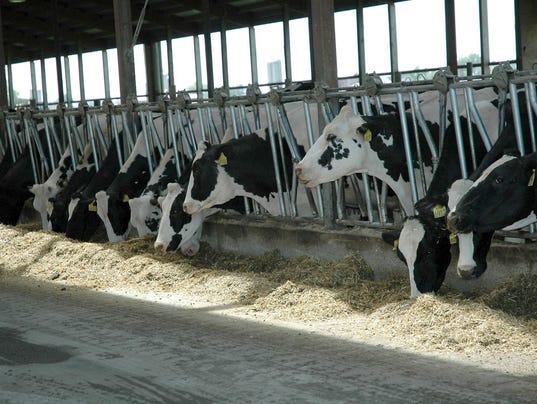 There is a new concept afoot that offers dairy farmers a valuable key to more efficient milk production and herd health.
There is a new concept afoot that offers dairy farmers a valuable key to more efficient milk production and herd health.
Milk fatty acid levels, captured by mid-infrared milk analysis tools, were explained by milk quality specialist Dr. Dave Barbano, Cornell University, during the November Hoard’s Dairyman webinar.
Dairy farmers need analytical results that help them manage feed efficiency, animal health and welfare, and environmental impact in order to improve economic performance and sustainability, Barbano said.
“Ultimately, the success of farm management depends on correct decisions down to the animal-by-animal basis,” he pointed out. “The challenge, particularly in large farm management, is to find the cow of interest that needs something special right now, make a decision and take action.”
Milk production is the sum of the performance of all the individual cows, but generating reams of data can be more overwhelming than helpful.
“We really need to condense it down to the information that helps us make decisions, and not be buried in the sea of numbers,” Barbano said.
Analysis and interpretation
The new testing and data, both at the herd and individual cow level, focuses on milk fatty acid composition and the relation to seasonality of fat and protein.
“These new metrics kind of give us a new window into understanding what’s going on in the interaction between cows, health, feeding, management and so on, that I don’t think we see just looking at the fat and protein content,” Barbano said.
When testing first began five years ago at the St. Albens Co-op, the first thing that came to light was a fairly strong correlation of de novo fatty acids with bulk tank fat tests
Field studies of farms with low de novo (LDN) and high de novo (HDN) fatty acids gathered feed samples, management information and, most importantly, production per cow.
The researchers were surprised to find the high de novo herds of Holsteins/Jerseys actually produced more milk per cow. They also had higher fat and higher true protein.
“In the Northeast in 2014 when we did the study, given the fat and protein price, the difference between the HDN and LDN herds at 25 kg milk/100 cows/year would result in a gross income difference of $8,544 for fat and $15,695 for protein,” Barbano shared.
The study was repeated in 2015 on Holstein-only herds. While there was no difference in production, the HDN herds, again, measured higher levels of fat and protein. At the time, prices for protein had dropped, but the differences between the HDN and LDN herds at 30 kg of milk resulted in a gross income difference of $9,125 for fat and $6,935 for protein for 100 cows/year.
“So understanding how to influence these components and get them up without losing milk volume really is something in terms of trying to push better profitability on farms,” Barbano said.
Impacting de novo
The data showed less feed bunk space per cow (
“This showed up very clearly in both years, in both studies,” Barbano noted.
Higher stall stocking density in pens (>1.1 cows per stall) was also related to lower de novo fatty acids and lower fat and protein test.
The form of the ration and fiber is also important, with higher peNDF as a % of DM for the high de novo fatty acid farms (26.8 vs 21.4%).
High levels of de novo fatty acids in the milk indicates that the rumen fermentation is working very well and high levels of acetate, propionate and butyrate are being produced in the rumen, Barbano explained.
Excellent fermentation of forage produces a larger microbial biomass in the rumen and provides more essential amino acids in support of milk protein synthesis.
“De novo fatty acid measurement in milk is an excellent tool to evaluate the effectiveness of rumen fermentation and forage digestion,” he pointed out.
The relationship between variation in milk fatty acid composition and bulk tank milk fat and protein content for Holstein herds has been upheld by data collected from 167 Holstein farms across the nation.
Instruments capable of testing bulk tank milk for de novo are in use at several cooperatives, including St. Albans and AgriMark, who are providing their farmers with daily results.
Looking ahead
Researchers and farmers are getting a much better understanding of how to use milk fatty acid data for whole herd or milking group diagnostics, Barbano said.
The next step is to develop hardware and software to integrate this milk testing approach into the milking system so farmers can get data on a continuous basis from every cow.
Barbano envisions a inline sensor that will shoot off a “fingerprint” of the milk from each cow, and farmers would get back a list of cow numbers or groups and what needs to be done.
Barbano’s presentation, hosted by Steve Larson, Hoard’s Dairyman, and Mike Hutjens, University of Illinois, was sponsored by Quality Liquid Feeds (QLF). It has been archived online by “Hoard’s Dairyman” and is available for free viewing at hoards.com.
Source: Wisconsin State Farmer









